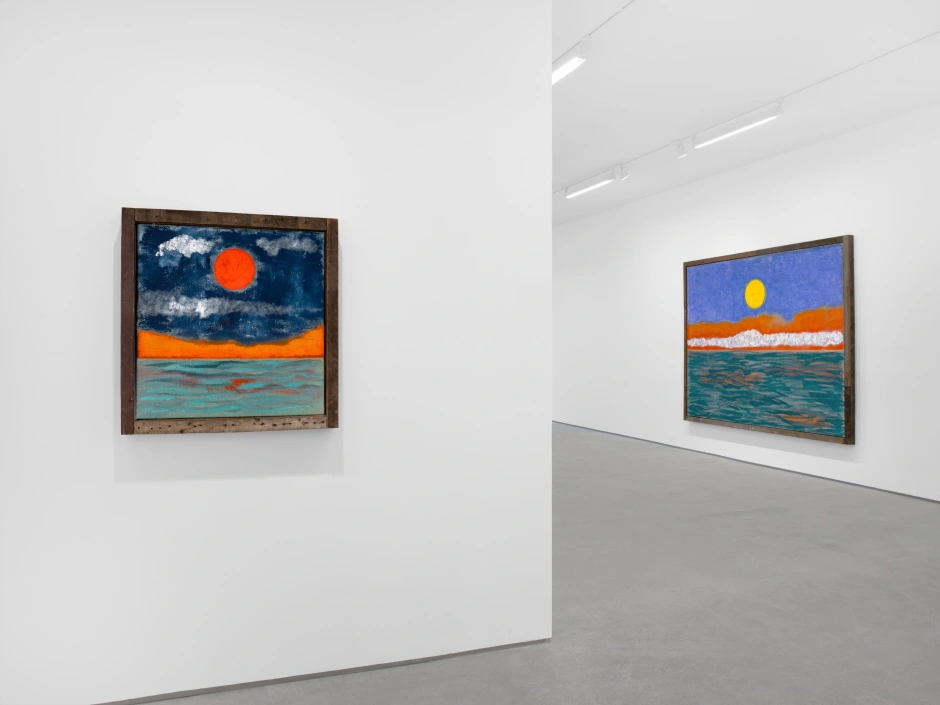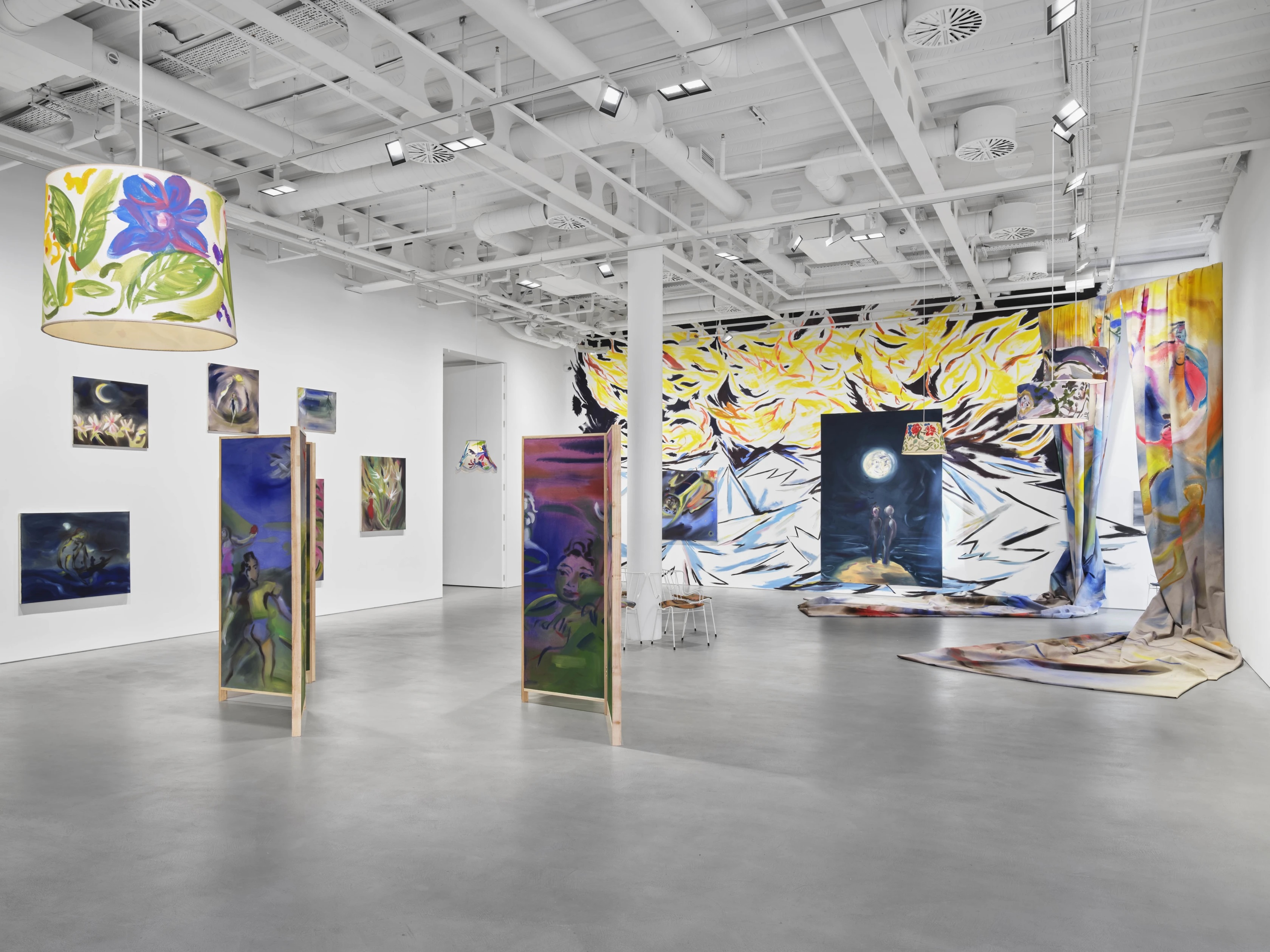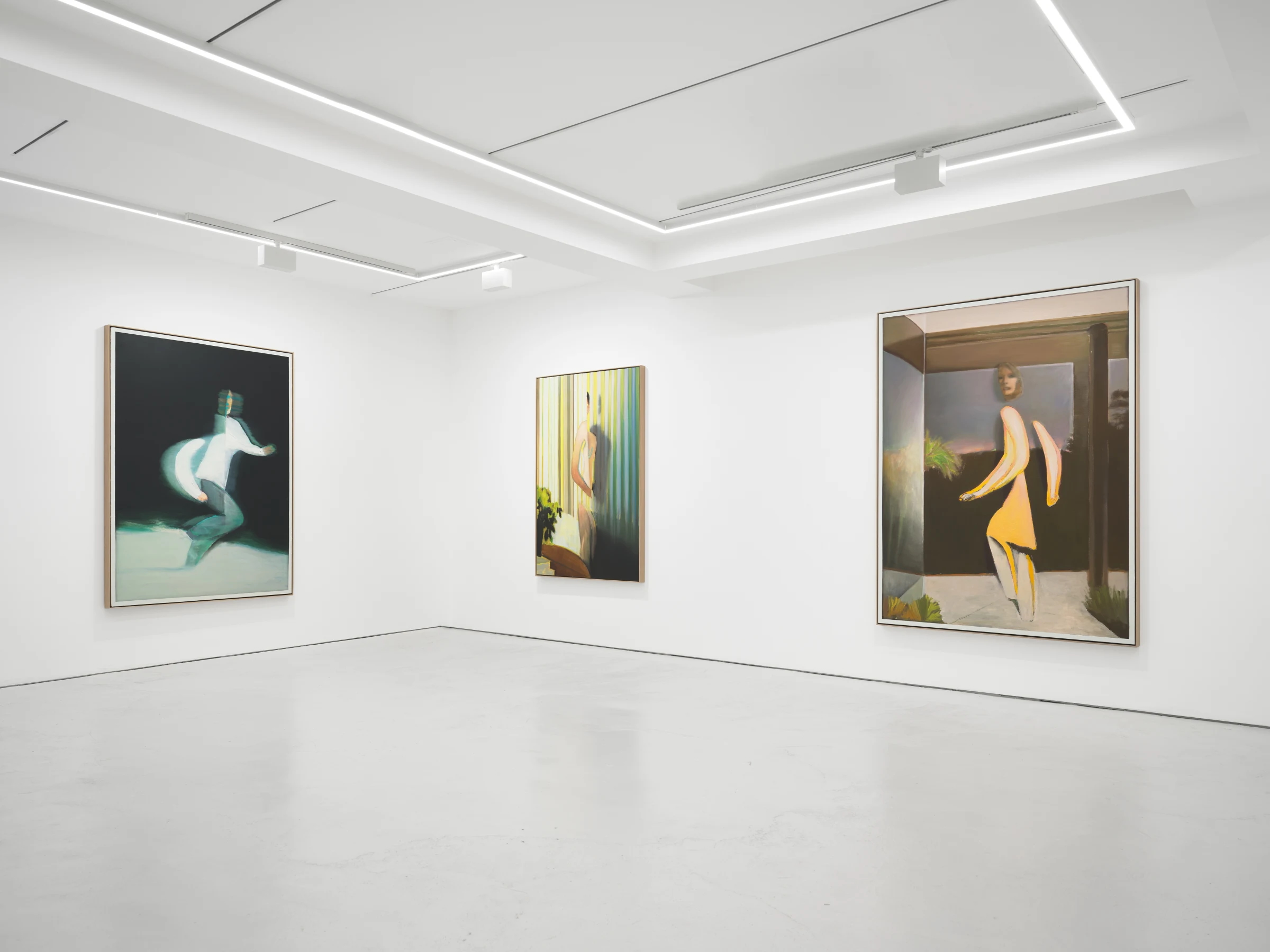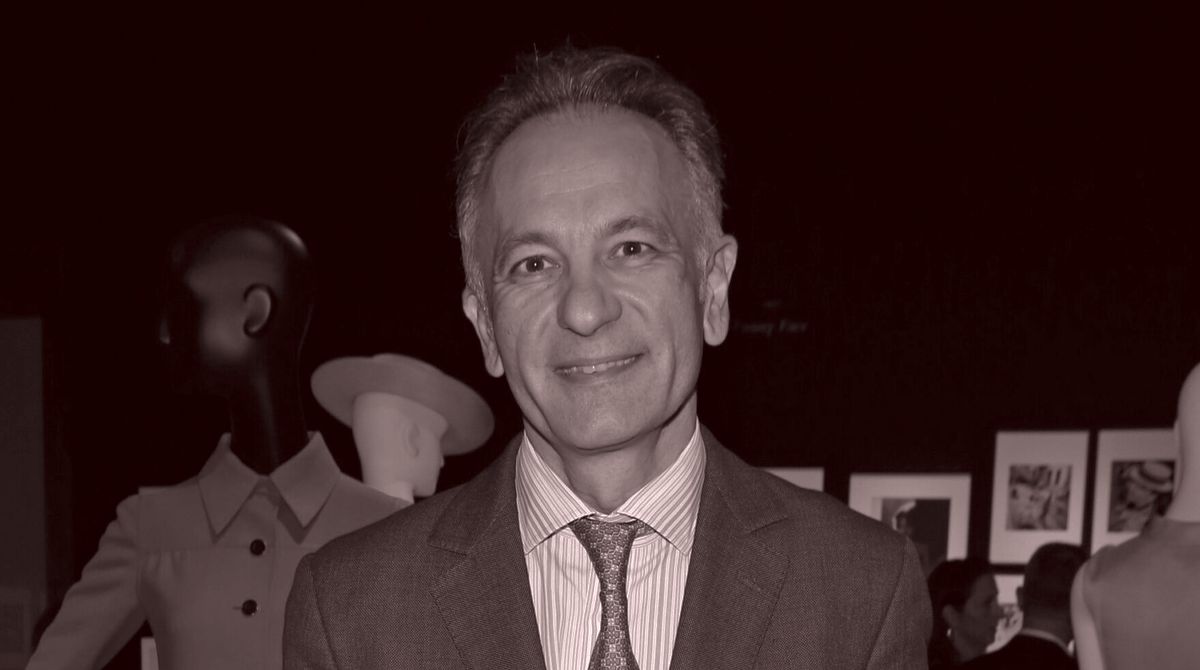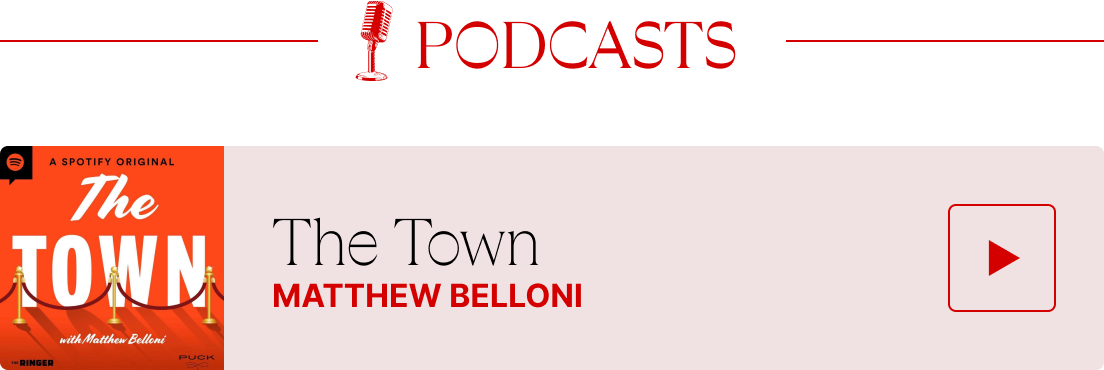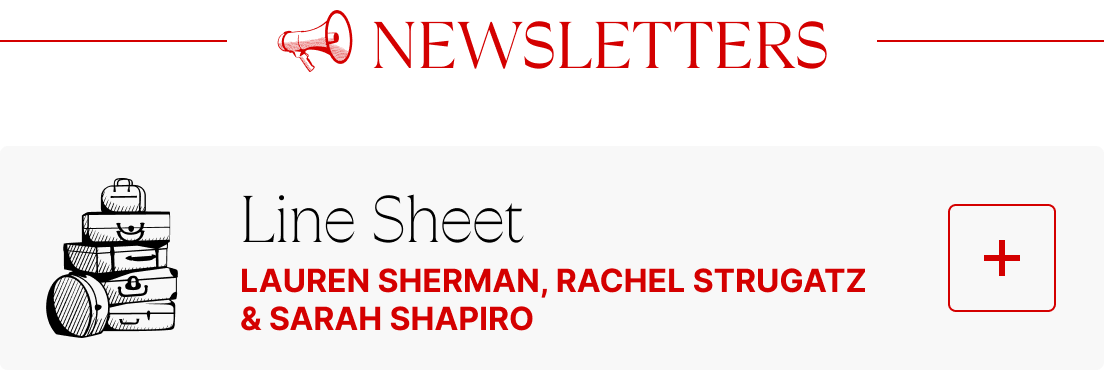Welcome back to Wall Power, where we’re catching up on last week in London and
getting ready for Art Basel in Hong Kong.
Tonight, we’ve got more of my exit interview with Guillaume Cerutti, covering the future of François Pinault’s massive art collection, which comprises 10,000 works spread across three different museum locations. What began as a personal passion is now larger than one man—and must begin to countenance a life beyond Pinault’s own interests in artists and their work. Cerutti also discusses the thinking
behind his new role, and how the Pinault collection fits into the commercial assets of Groupe Artémis, which include Kering, Christie’s, and CAA.
But first, Dylan has an update on what really happened to Jackson Arn…
|
|
|

|
Dylan Byers
|
|
- Arn you
curious?: On Monday, The New York Times reported that the august brand had cut ties with its newish art critic, Jackson Arn, following complaints about his “inappropriate,” “intoxicated” behavior at the magazine’s 100th anniversary party last month. But the paper offered no further specifics—was this classic Timesian prudishness, H.R. babble, or did they just not know? Well, I’m reliably told that Arn was indeed “intoxicated”—“blackout drunk” is
how one person put it—and that he got handsy with a lot of men and women, including some senior leadership. Naturally, this resulted in complaints to Condé Nast H.R. (A generation ago, of course, people got promotions at the company despite this sort of gross behavior, as Michael Grynbaum’s forthcoming book on Condé may depict.)
The general sentiment at The New Yorker, of course, is that this is all really a shame, and that’s the truth. Arn was a
talented and hardworking writer at the dawn of his career, presumably fulfilling his dream job. In time, Arn may very well work his way back into the industry’s good graces—as similarly exiled Jeffrey Toobin eventually did—though sources rightly advised that he’d do well to learn from the incident and modulate his social-professional behavior. (Arn and spokespeople for both The New Yorker and Condé Nast did not respond to requests for comment.)
|
|
|
There’s also more auction action to report on from late last week…
|
- Gerard Sekoto scores in London and Paris: Last week in London, South African artist Gerard Sekoto saw his work achieve its second-highest price at auction, as The Artist’s Brother, from 1947, was sold at Bonhams for £406,800 ($516,000). The sale came the day after the Centre Pompidou in
Paris opened Paris Noir, a show of 150 artists from Africa, the Americas, and the Caribbean, all of whom lived and worked in Paris in the second half of the 20th century. Featuring a wide range of artists—from Beauford Delaney, Bob Thompson, Wifredo Lam, and Loïs Mailou Jones on one side of the Atlantic, to
Sekoto and Chéri Samba on the other—the show aims to situate Paris as the capital of creativity for the African diaspora.
- Christie’s sale of Chinese artworks totals $22.7 million: On Friday, I told you about the Chinese antique furniture that sold well above estimates at Christie’s. I forgot one lot, a carved Huanghuali floor screen estimated at $100,000 that
sold for $2.2 million with fees. The rest of the sale, which contained the porcelains, featured equally astonishing bidding wars. The top lot was a blue-and-white Qianlong dish, decorated with an “iron-red dragon,” which was estimated at a hefty $1.2 million but got
bid up to a $2.7 million selling price. A Yongzheng cup, decorated with a daylily, was estimated at $400,000 but sold for $1.3 million. A Yongzheng bowl, this one decorated with grapes, was estimated at $80,000 but was sniffed out by bidders
who ended up pushing the sale price to $540,000. A Kangxi water pot estimated at $200,000 ended up making $550,000 with fees. And a Yongle blue-and-white Chrysanthemum dish estimated at $300,000
sold for $655,000. Christie’s says that a quarter of the buyers were younger collectors (the auction house called them “Millennials”), and 15 percent of the bidders and buyers were new to the category.
|
|
|

|
Julie Brener Davich
|
|
Gallery Hopping with Julie
(London Edition)
|
Maybe you heard that Heathrow got shut down on Friday? Well, I was meant to fly back
from London that day, so I got marooned there with even more time to catch up on some gallery shows: Alvaro Barrington at Sadie Coles HQ; Sophie von Hellermann at Pilar Corrias; Jonathan Wateridge at Grimm; Dan Flavin at Ordovas; and the intimate, thematic group show Nocturnes at Lyndsey Ingram gallery.
|
Alvaro Barrington, Installation view of Back Home / I Am… I Said, Sadie Coles HQ,
London. Photo: Courtesy of Sadie Coles HQ
|
Sadie Coles HQ, at 62 Kingly Street, is located on the second floor of a former nightclub, with
vaulted skylights and a floor-to-ceiling, semicircular window. The gallery is showing Alvaro Barrington’s paintings of the Caribbean Sea illuminated by the sun or moon. Barrington spent his childhood in Grenada, then lived in Brooklyn, before moving to London in his early 30s to attend the Slade School of Fine Art. The 42-year-old has been on a steep ascent in the art world since his first solo show at MoMA PS1 in 2017. These days, he’s coming off the conclusion of his Tate
Britain commission, Grace. His saturated cerulean, turquoise, and orange compositions at Sadie Coles (on display until April 26) are painted on burlap and framed in reclaimed wood, ranging in size from 10 inches to 10 feet. The smaller ones all sold opening night.
|
Sophie von Hellermann, Installation view of Moonage, Pilar Corrias, London. Photo: Courtesy of Pilar Corrias
|
Nearby at 51 Conduit Street, Pilar Corrias gallery had a wonderfully immersive show by von
Hellermann, called Moonage, which closed yesterday. Taking inspiration from David Bowie’s Ziggy Stardust, characters in her paintings traverse spaces both real and ethereal: lovers in an orbiting rocket ship, a moonlit mermaid looking down at a stranded sailboat. Von Hellerman’s feathery brushwork helps create this sense of untetheredness.
Von Hellermann, who turns 50 this year, was born in Munich and is now based in London and Margate, England. Her profile has
risen in recent years as the scale of her work has become more ambitious, leaping off the canvas and onto other objects. In addition to the unframed canvases at Pilar Corrias, she painted pendant lampshades, folding screens, drapery, and the wooden seats of metal-frame chairs.
The Flavin show a couple doors down at Ordovas, through April 25, comprises four of the artist’s fluorescent lightbulb installations. The presentation begins on the lower level with a work—Flavin called them
“situations”—conceived in 1963, when fluorescence first became his medium, composed of four red light rods assembled into a long horizontal rectangle. Ordovas installed the piece in a dark, intimate space and put a bench there, allowing visitors to sit and bathe in the red light. Upstairs are three lightworks in shades of pink, yellow, and blue spanning 1969 to 1987—demonstrating, at a glance, how Flavin’s work evolved during that time period. Each installation is from an edition of either three
or five. Two are on loan from the estate and two come from private collections. Prices range from $500,000 to around $1.5 million.
|
Jonathan Wateridge, Installation view of Vanishing Point, Grimm Gallery, London.
Photo: Courtesy of Grimm Gallery
|
Over at 2 Bourdon Street, across from Gagosian’s Grosvenor Hill location, Grimm gallery wasn’t
on my planned route, but Wateridge’s painting in the window, Hold Back the Night (2025), drew me inside. Born in Zambia and living in Norfolk, England, he studied at the Glasgow School of Art. Wateridge, now in his early 50s, has always painted fleeting moments, but what was formerly a more realist style has evolved into cinematic representations. Each painting in the show, on view through April 5, depicts a singular figure—mostly women, many in midcentury modern–esque interiors—that
look like they’re flickering back and forth between dimensions. As with von Hellerman’s works, there is something familiar, yet also otherworldly, about them.
A few doors down, at 20 Bourdon Street, I visited Lyndsey Ingram’s namesake gallery, which specializes in postwar and contemporary prints and works on paper. I met Ingram, a New York transplant in London, at her Showcase booth during TEFAF, where she was offering a large selection of
Miró prints. In London she was showing Nocturnes, a group show of 36 night-themed works, conceived by senior director Olivia Paterson. The gallery’s interpretation of the theme was wide-ranging—from the obvious (Vija Celmins’s Night Sky 3, 2002) to the more nuanced (Lucian Freud’s Lord Goodman in His Yellow Pyjamas, 1987)—as were the prices, from £2,000 to £110,000.
I was lucky
to catch Ingram’s show on its last day. I was a little less lucky at Gagosian, which had just closed Takashi Murakami’s show based on historical Japanese compositions. The gallery was in the process of installing an immersive installation by Amoako Boafo, inspired by his childhood in Ghana. I look forward to seeing it on all of your Instagram feeds.
|
|
|
Now let’s check in again with Christie’s chairman of the board, Guillaume Cerutti…
|
|
|
The auction house’s outgoing C.E.O. sits down to talk about his new role as
head of François Pinault’s 10,000-work art collection, and how he’ll integrate one man’s vision into the luxury commercial interests of Groupe Artemis.
|
|
|
Earlier this year, Guillaume Cerutti stepped down as C.E.O. of Christie’s after
eight eventful years—including a rapid remaking of the company to substitute luxury collectibles for antiques as the on-ramp for new clients; the record-setting sale of Leonardo’s Salvator Mundi for $450 million; the disruption of the pandemic; and the triumphant single-owner sales of David Rockefeller, Barney Ebsworth, and Paul Allen. Shortly after he announced his departure, I sat down with him at Christie’s
Rockefeller Center headquarters to talk about his tenure. (If you haven’t already, upgrade yourself to the Inner Circle to read the first part of the interview.)
Guillaume had a lot more to say beyond the “exit interview” I was conducting. I thought many
of you would be curious to hear about his next challenge as the head of the Pinault Collection. We also discussed how the various parts of the Pinault empire, managed through Pinault’s Groupe Artémis family office, fit together. This part of the interview—an extremely nuanced response to a simple question—has been only lightly edited for clarity.
|
Marion Maneker: Guillaume, I’d previously asked you why
Christie’s, which is owned by Groupe Artémis, was not part of Kering, the luxury goods conglomerate controlled by the Pinault family, when it seemed to share many of the same clients and cultural interests. Since then, the Pinaults have taken a controlling interest in the talent agency CAA. Would you mind going through that explanation and tell us how that applies to your new role running the Pinault Collection?
Guillaume Cerutti: Great
question. First, all these brands, Christie’s, CAA, and within Kering— Gucci, Saint Laurent, and others—are great brands with strong identities. Which means that the normal process for each of them is to be in their swim lane and have their objectives. Collaboration is not something that comes as a given. You really need to identify what makes sense, what will produce value. Otherwise, it’s a distraction. If it doesn’t add value to your own company and the other, you will not do it the year
after. It will be a one-off.
The real challenge is to make sure that each of these C.E.O.s understand that there is potential added value in a mutual project and to push for this themselves. If the impression doesn’t come from the top, it will never work. So it takes time because it’s not natural. While it’s easy to think that, of course, luxury, auction, talent through CAA, seems to be in the same field, in reality, the business models are completely different. It doesn’t work the same
way. Kering is manufacturing goods. Christie’s, we are a platform; we make a match between supply and demand. CAA, they are dealing with talent; it’s a relationship business. It’s very different. And to combine this, believe me, it’s not easy.
You need to identify what makes sense. That’s the mission the Pinaults want me to explore with the Pinault Collection—with the additional aspect that it’s a nonprofit, while the rest are for-profit companies. So you need to think
about what makes sense to create added value in terms of the bottom line for those who are profit-driven, or in terms of the image for the group. What type of soft power, or additional value, for the Pinault holdings do you create at the end of the day? That’s really what is challenging and, at the same time, stimulating, because that’s something we need to explore.
I was recently in Los Angeles, where we were
showing some of the Pinault Collection at Christie’s. It is the first time in 25 years. That looks crazy, to think that we have never exhibited the collection of our owner, even though we are in the same art world. Why? Because it’s profit versus nonprofit. You don’t want to mix one with the other and risk
creating a conflict. Well, if you define the rules very clearly, there is no reason for us not to exhibit works from the Pinault Collection. That’s what we do very often with noncommercial projects. We do that all the time with other collectors.
|
The changing role of the Pinault collection within Artémis is partly a function of its
maturing. Also, as you know, this all has to outlast the founder. So its role has to change. It’s less personal; it’s now more, how do you measure its value?
The most important move regarding the Pinault collection is the move from something that was a collection built by an individual with fantastic instinct and love for art and for the artist. Mr. Pinault collects in depth. He loves to visit studios. He is one of these collectors who enjoys interacting with artists. That’s really what
he likes.
So the move from what is now two museums in Venice and one museum in Paris, with public exhibitions, with questions about how we manage the 10,000 plus artworks, it’s something else, you know? It’s different. It’s another layer. It’s fantastic, but that creates different responsibilities and challenges, or, if not challenges, at least opportunities for the future. What do we do with this? What’s the purpose of this?
Mr. Pinault is still very active. But 10, 20, 30 years
from now, well, there is still a collection. What do we do? How do we build this? I am working with him and his family, because his son and grandson are also part of this. How do we continue with the same momentum, the same spirit, but with a difference? It’s fascinating to take something that is driven by personal interests and recognize that it is now so large it actually can sustain itself. That is the challenge of a contemporary art collection: You need to continue permanently. You cannot
stop. The key thing for Pinault is that it’s the creation from now, so if you want to continue with the same spirit, you need to also think about what it means in five, 10, 20 years with the artists of that time.
|
That will have to do for today. I look forward to being in touch on
Tuesday.
M
|
|
|
Puck founding partner Matt Belloni takes you inside the business of Hollywood, using exclusive reporting and
insight to explain the backstories on everything from Marvel movies to the streaming wars.
|
|
|
The ultimate fashion industry bible, offering incisive reportage on all aspects of the business and its biggest
players. Anchored by preeminent fashion journalist Lauren Sherman, Line Sheet also features veteran reporter Rachel Strugatz, who delivers unparalleled intel on what’s happening in the beauty industry, and Sarah Shapiro, a longtime retail strategist who writes about e-commerce, brick-and-mortar, D.T.C., and more.
|
|
|
Need help? Review our FAQ page or contact us for assistance. For brand partnerships, email ads@puck.news.
You received this email because you signed up to receive emails from Puck, or as part of your Puck account associated with . To stop receiving this newsletter and/or manage all your email preferences, click here.
|
Puck is published by Heat Media LLC. 107 Greenwich St, New York, NY 10006
|
|
|
|

